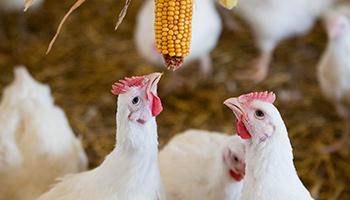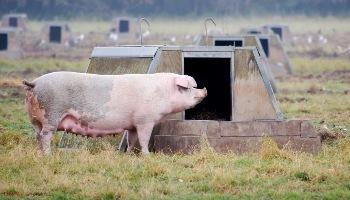Meat chickens - key welfare issues
We're concerned about the welfare of meat chickens, of particular concern is growth rate, space, lighting and environmental enrichment.
Help one billion chickens a year
We're calling on supermarkets to sign up to The Better Chicken Commitment, and commit to raising welfare standards across their whole supply chain of chicken by 2026.
Growth rate
Meat chickens have been genetically selected to grow very quickly. The time from when the birds hatch to reaching slaughter weight can be as little as five weeks. This rapid weight gain can cause severe health problems, such as lameness and heart defects.
We believe that only genetically slower growing breeds should be used, as these are less likely to develop these welfare problems.
Space
Keeping chickens in overcrowded conditions lowers their wellbeing, as it stops them from moving around and exercising properly. It can also be more difficult to maintain good quality air and litter (the material covering the floor).
When overcrowded:
- Problems such as lameness and skin diseases can be much more common
- It can be difficult for birds to perform many of their natural behaviours
When the total bird weight within a square metre of floor space is higher than 30kg - such as 15 x 2kg birds - there's a higher risk of serious welfare problems developing. Many meat chickens are reared at a total bird weight of 38kg per square metre, such as 19 x 2kg birds.
Environmental enrichment
The majority of chickens don't have items in their environment that promote the performance of their natural behaviours, such as perching and investigation.
A stimulating, enriched environment (for example, one containing straw bales, perches and objects to peck at) encourages birds to be more active, helping to keep them healthy.
Lighting
Chickens only have to be provided with artificial light at a light level of 20 lux. In contrast, a brightly lit room is around 400 lux, and natural daylight is around 30,000 to 100,000 lux
Chickens have well-developed colour vision; it is their main sense and is designed for use in brightly lit conditions. Daylight is required for chickens to use this sense to their full potential.
Find out how you can help improve the lives of meat chickens.



